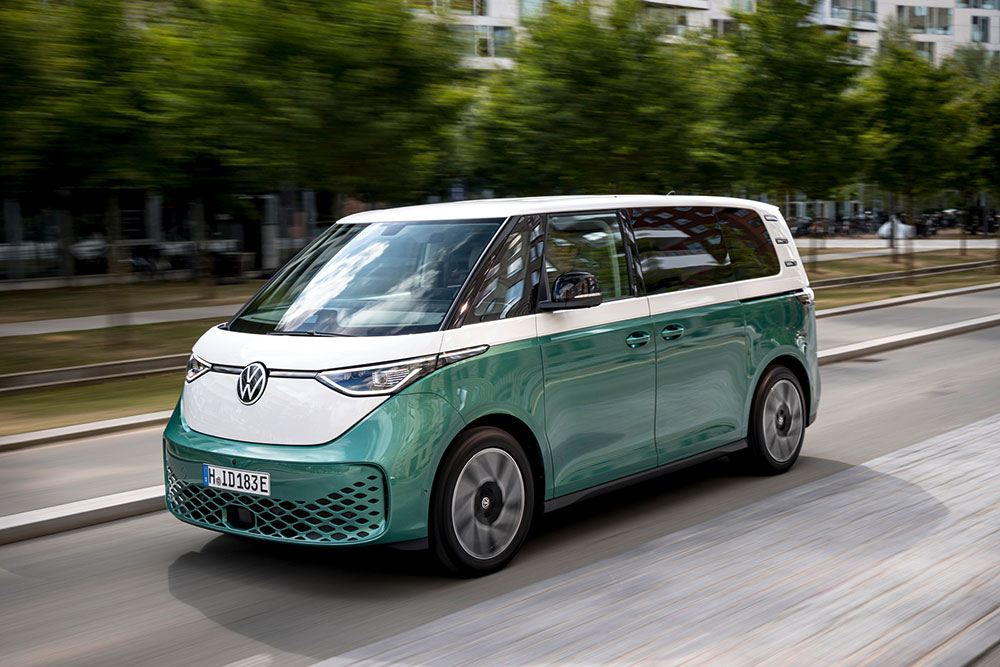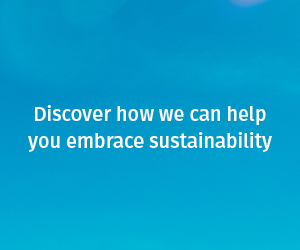Tech track: VW electric van’s new safety features

The Volkswagen ID. Buzz electric van is being introduced with new intelligent assistance systems that can increase safety and make driving less stressful.
The vehicle can use swarm data (Travel Assist with swarm data) and learn recurring parking manoeuvres (park assist plus with memory function).
Swarm data takes information from other VW vehicles and uploads it to the cloud to then inform other vehicles.
These systems can also be optionally ordered for all other newly produced ID. models from the ID.3 and ID.4 up to the ID.5.
The optional Travel Assist can keep the vehicle in lane, either centred or to one side depending on the settings, maintain a set distance from the vehicle in front as well as maintaining a set speed.
Travel Assist also has predictive cruise control and a cornering assist function.
Here, the vehicle speed can adapt to the current speed limit via sign recognition but also recognise the course of the round and adapt to bends.
When driving on highways at speeds above 90 km/h, Travel Assist with swarm data can even perform lane changes if desired by the driver.
The ID. Buzz also features other automated driver assistance systems (ADAS) that help to increase safety.

How Travel Assist with swarm data works.
The following ADAS are on board as standard:
- Swerve support, oncoming vehicle braking when turning.
- Driver alert system.
- Forward autonomous emergency braking with pedestrian and cyclist monitoring.
- Lane assist.
- Dynamic road sign display.
- Car2X traffic hazard alert function, where vehicles inform each other of critical situations.
Hydrogen panel turns water to gas
KU Leuven researchers in Belgium have created a hydrogen panel similar to a PV panel that directly converts water vapor from the air into hydrogen gas using the electricity produced by the solar panel.
They claim it is possible to produce 250 litres of hydrogen per day, at an efficiency of 15%.
The development, called the Solhyd project, is transitioning from research to commercialisation.
The system works by splitting water molecules collected via a membrane from the air into low-pressure hydrogen using the electricity produced from the solar panels.
The panels are interconnected via gas tubes and the hydrogen is collected at a central point and then compressed if required.
Currently the panels are expensive, but the researchers expect a price curve decrease similar to when solar PV panels came onto the market.
At this stage they expect that the product will be commercially available from 2026 onwards.
Volvo reveals new electric SUV
Volvo has just unveiled the new EX90 in Stockholm.
The revamped full electric SUV is sporting several new features such as a Lidar unit for the driving assistance systems that can detect small objects at a distance of several hundred metres.
The Volvo EX90 has a 111kWh battery using CATL cells with a WLTP range of 590km.
Onboard It has an 11kW bi-directional charger that will charge the battery in 11hrs.
It also boasts 250kW DC charging capability charging the battery from 10 to 80% in 30 minutes.
At a more common 50kW DC charging station it will take 97 minutes.
It even has a claimed towing capacity of 2.2T.
As Volvo have committed to 100% EV sales in Australia by 2026 there is a good possibility that it will make its way Down Under.
Kerbside chargers on the way
Australian charging solutions company EXV has teamed up with British EV charging firm Connected Kerb with plans to install 1,000 kerbside EV chargers.
A growing problem has emerged of owners running charging leads across footpaths and through trees to charge their EVs, creating trip hazards and fire risks.
To alleviate this problem EXV and Connect Kerb are aiming to have the first chargers operational in the first quarter of 2023.
With the sales of EVs doubling in the last year solutions like this are required to ensure everyone can access EV charging infrastructure no matter where they live, existing apartment blocks are currently one area of concern with limited solutions.
These types of EV charging solutions will greatly accelerate EV uptake for those living where installing a home charger simply isn’t possible.
It's time to plug in to the future: Learn more about EVs
Related topics
Things to note
The information in this article has been prepared for general information purposes only and is not intended as legal advice or specific advice to any particular person. Any advice contained in the document is general advice, not intended as legal advice or professional advice and does not take into account any person’s particular circumstances. Before acting on anything based on this advice you should consider its appropriateness to you, having regard to your objectives and needs.
Insurance Products (excluding Travel Insurance) are issued by RACQ Insurance Limited ABN 50 009 704 152 (RACQI) and arranged by its agent, RACQ Distribution Services Pty Ltd (RDS) ABN 35 116 361 650, AFSL 567130 and RDS' authorised representatives (including RACQ Operations Pty Ltd ABN 80 009 663 414, AR No. 234978 (RACQO). Conditions, limits and exclusions apply. RDS and RACQO are in the RACQ group of companies. One of the companies in the RACQ group of companies has a minority shareholding in RACQI.
RDS and RACQO have not taken your personal objectives, circumstances or needs into account when preparing advice regarding insurance products and you will need to consider whether the advice is appropriate for you. Read the Product Disclosure Statement (PDS) and any applicable Supplementary PDS before making a purchase decision on this product. You can also access our Target Market Determinations on this website. RDS receives a commission from RACQI for the policies it arranges. RACQO receives fees paid for services it provides to RDS. Further details about remuneration are available on request prior to purchasing.
Banking and loan products issued by Members Banking Group Limited ABN 83 087 651 054 AFSL/Australian credit licence 241195 trading as RACQ Bank. Terms, conditions, fees, charges and lending policies apply. This is general advice only and may not be right for you. This information does not take your personal objectives, circumstances or needs into account. Read the disclosure documents for your selected product or service, including the Financial Services Guide and the Terms and Conditions, and consider if appropriate for you before deciding.
Except for RACQ Bank, any RACQ entity referred to on this page is not an authorised deposit-taking institution for the purposes of the Banking Act 1959 (Cth). That entity’s obligations do not represent deposits or other liabilities of RACQ Bank. RACQ Bank does not guarantee or otherwise provide assurance in respect of the obligations of that entity, unless noted otherwise.
RACQ Bank subscribes to the Customer Owned Banking Code of Practice which establishes higher standards than the law requires. The Code reflects modern consumer expectations and developments in approaches to issues such as consumer vulnerability, guarantors, and supporting customers through financial hardship. Please read our Customer Owned Banking Code of Practice page for more information.
RACQ Operations Pty Ltd (ABN 80 009 663 414 AR 000234978) and Members Travel Group Pty Ltd (ABN 45 144 538 803 AR 000432492) are acting as an Authorised Representative of the issuer of the insurance, Tokio Marine & Nichido Fire Insurance Co., Ltd. (ABN 80 000 438 291 AFSL 246 548). Any advice set out above is general in nature only, and does not take into account your objectives, financial situation or needs. Before purchasing any travel products, please consider the RACQ Travel Insurance Product Disclosure Statement (PDS) and the Target Market Determinations (TMDs) that apply to these products. Whilst the PDS outlines the Terms and Conditions of these products, the TMDs outline the intended class of customers that comprise the target market for these travel products. This will allow you to consider which products best suit your objectives, financial situation and needs and consider the products appropriateness to your personal circumstances. TMDs also outline matters involving the distribution and the review of these products. The PDS, Supplementary PDS and TMDs for each travel product can be found here.

